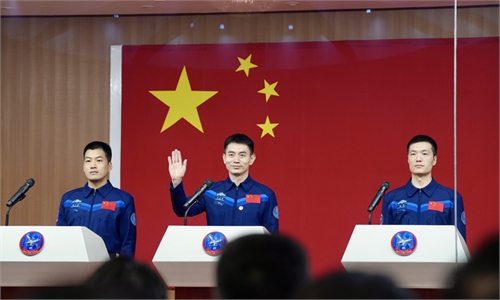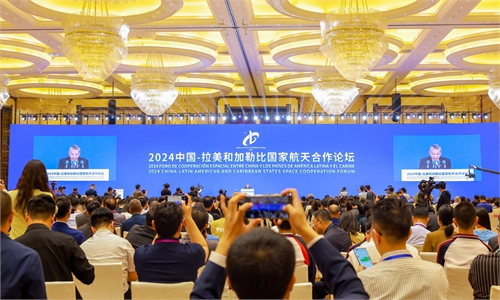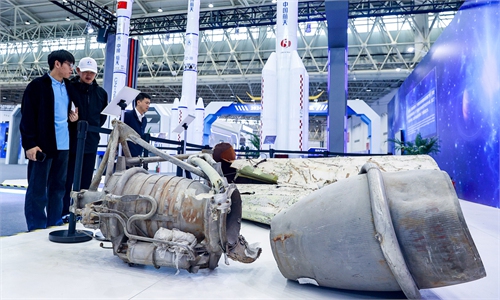New faces to head for space station as China announces Shenzhou-18 spaceflight crew
CMSA to expedite participation of foreign astronauts, tourists in space station flights
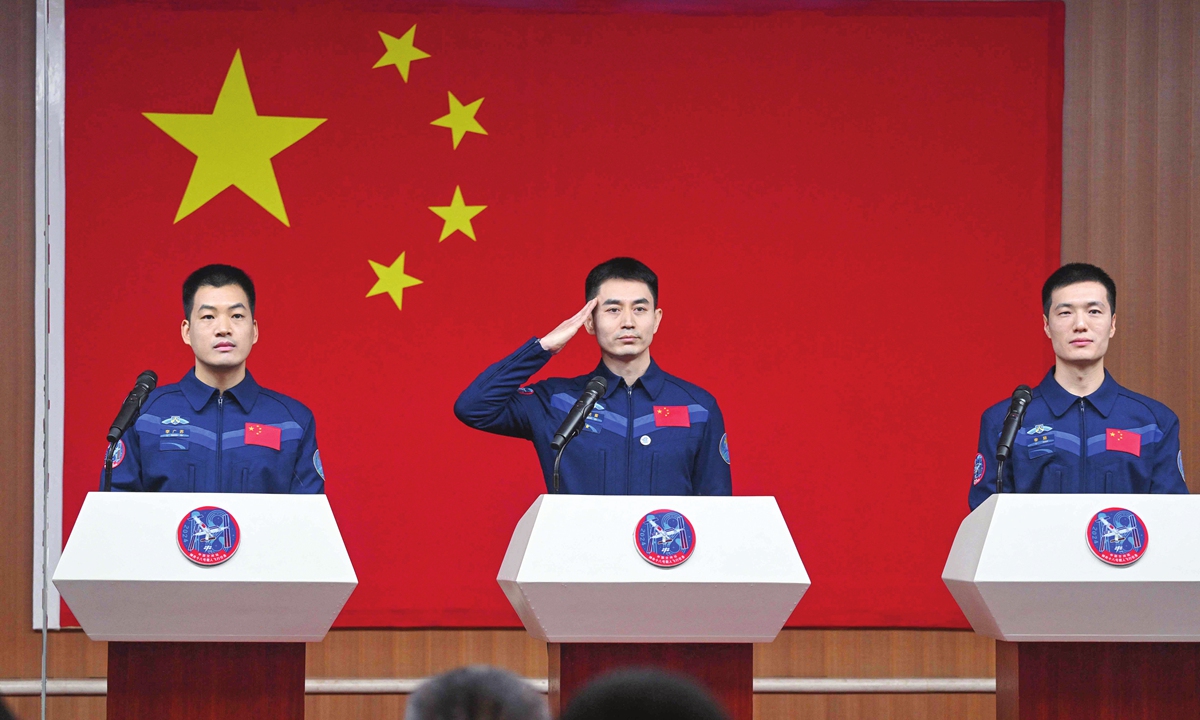
Astronauts for China's Shenzhou-18 space mission, Li Guangsu (left), Ye Guangfu (center) and Li Cong, attend a press conference at the Jiuquan Satellite Launch Center on April 24, 2024, a day before the launch of the mission. Photo: VCG
On the occasion of the ninth China Space Day, the China Manned Space Agency (CMSA) announced on Wednesday the mission crew for the Shenzhou-18 spaceflight, consisting of Ye Guangfu, mission commander, and two new faces Li Cong and Li Guangsu.
They will head for space via the Long March-2F carrier rocket at the Jiuquan Satellite Launch Center in Northwest China at 8:59 pm on Thursday.
Also from the same site, China's first satellite, Dongfanghong-1, was successfully launched 54 years ago today, reflecting the incredible journey of China's aerospace development. On this special occasion, the Shenzhou-18 mission crew met domestic and foreign press and expressed their anticipation ahead of the upcoming trip.
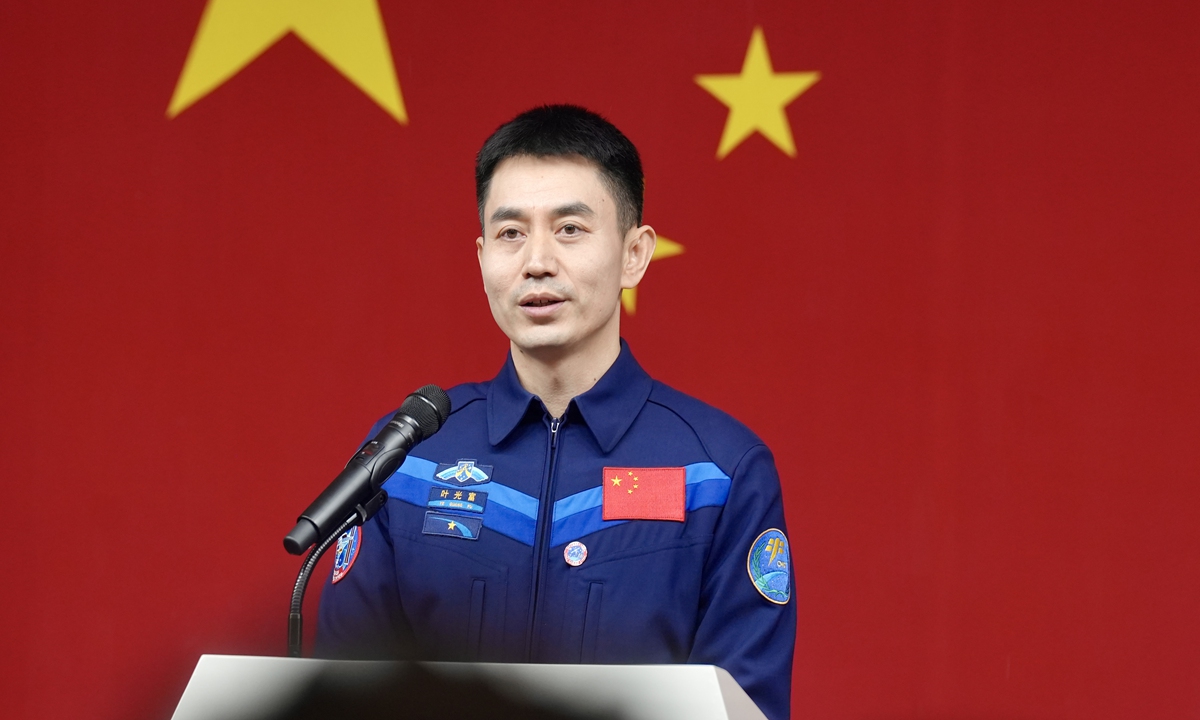
Ye Guangfu, mission commander of the Shenzhou-18 crew. Photo: Fan Anqi/GT
Ye, born in September 1980, is from the second batch of selected taikonauts and has previously participated in the Shenzhou-13 spaceflight mission. He was given the honorary title "heroic astronaut" following that mission.
Comparing this mission to the Shenzhou-13 two years ago, "what remains the same is how fortunate we are to be born at this great era shouldering the responsibility of carrying Chinese peoples' dreams into space," Ye said. What's different is that the configuration of the space station with three modules and three spacecraft is "completely new to me," and the number of tasks, their complexity, and the difficulty of operations have all significantly increased.
Li Cong, aged 35, is the youngest of all three. He and Li Guangsu, aged 37, were selected into the third batch of taikonauts in September 2020.
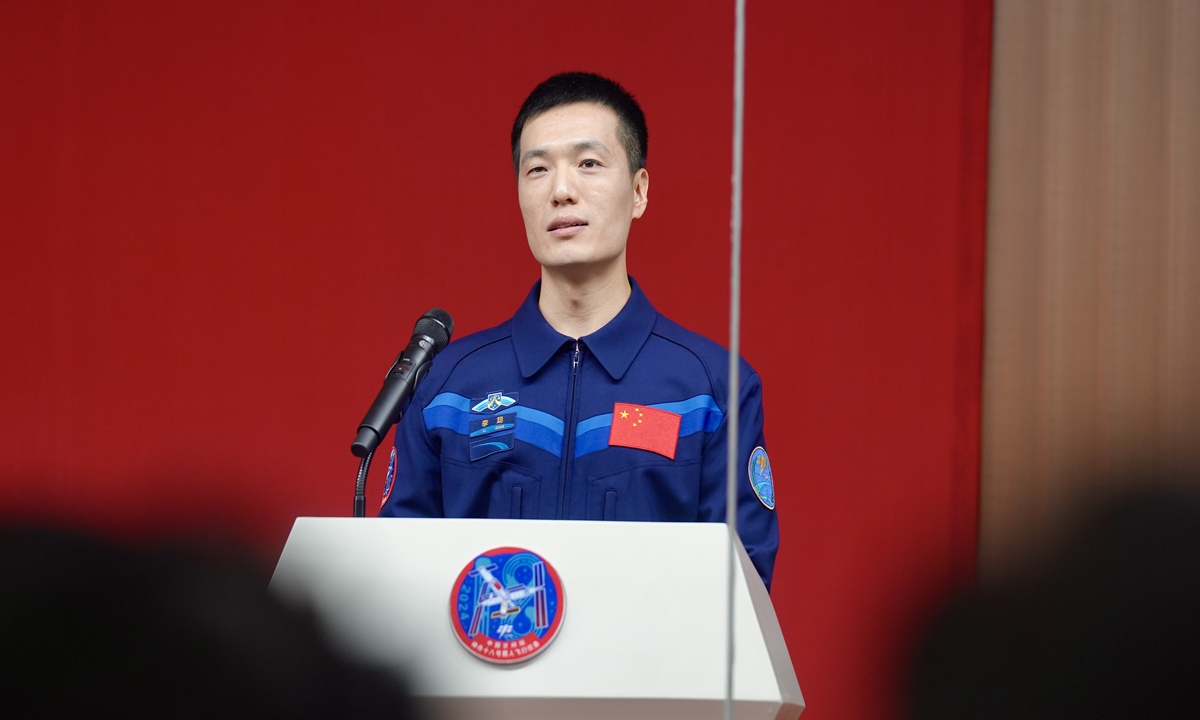
Li Cong. Photo: Fan Anqi/GT
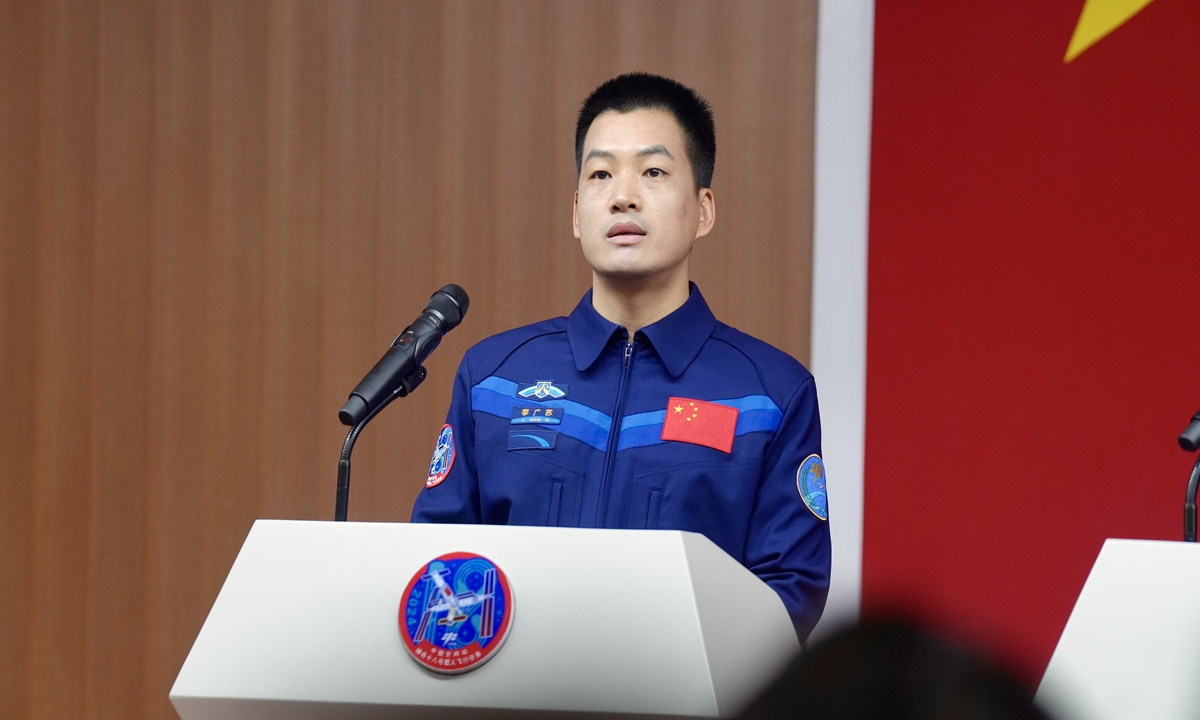
Li Guangsu. Photo: Fan Anqi/GT
Speaking of the upcoming mission, Li Guangsu said excitedly, "I look forward to the speed and excitement of 7.9 kilometers per second, and eager to feel the wonderful sensation of 'flying' without wings."
"In my spare moments, I want to gaze upon the beauty of our blue planet, to behold the magnificent landscapes of our motherland, to revisit the places that have nurtured me along the way. I also want to show the stars in the sky to my lovely children, and see if they truly twinkle," the taikonaut said.
"Currently, all preparations for the mission are progressing steadily. The Long March-2F Y18 rocket, poised to carry out this launch mission, is about to start fueling," said Lin Xiqiang, deputy director of the CMSA, at a press conference on Wednesday.
Shenzhou-18 marks China's 32nd manned flight into space, and the seventh group of taikonauts to be sent to the Tiangong Space Station.
As manned missions to Tiangong become normalized, the crew of Shenzhou-18 will manage and care for the space station and its payloads during their six-month stay, conducting maintenance, repairs, and status inspections to ensure the safe, reliable, and efficient operation of the space station, Lin noted.
A record number of more than 90 experiments are expected to be carried out using the in-cabin experiment rack and extravehicular payloads. They include fields such as microgravity basic physics, space materials science, space life science, aerospace medicine, and aerospace technology.
The CMSA also revealed at the press conference that next, China will accelerate research to welcome the participation of foreign astronauts and space tourists in flights to the space station. "In the near future, the Chinese space station will definitely incorporate more new members with different identities," Lin said.
Lin also elaborated on the country's future manned lunar exploration at Wednesday's press conference.
Eyeing the overall target to send Chinese to the moon by 2030, various systems are undergoing research and development as planned.
China has also launched the construction of the Wenchang manned lunar exploration launch site, with public solicitation of manned lunar vehicles and lunar payload schemes underway.
Compared to space station missions, lunar missions require astronauts to master the normal and emergency operations of the Mengzhou spacecraft and Lanyue lunar lander, as well as lunar surface operations such as entering and exiting the cabin, carrying out activities under one-sixth of normal gravity, driving lunar rovers over long distances, and conducting drilling, sampling, and scientific investigations on the moon.
China's fourth round of taikonaut selection will soon be finalized. After joining the team, they will work together with current taikonauts to carry out the follow-up missions in the space station and achieve the goal of landing on the moon.
